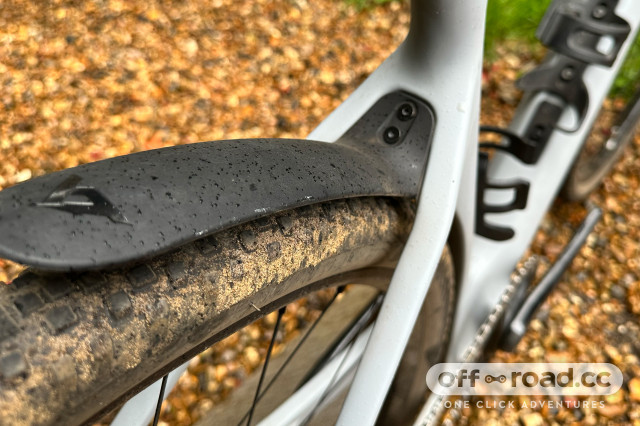Bike frame materials: carbon vs alloy explained

The biggest part of your mountain bike is the frame. Therefore, it’s logical that frame material significantly influences your riding experience and the price of your mountain bike.
- Mountain bike frame protection - Everything you need to know
- 10 of the best bikepacking frame bags for gravel bikes - tried and tested packs that are the best you can buy
- The ultimate guide to frame materials: what's best for bikes?
There is a notable difference in the price between carbon and alloy framed bikes but why? And do the differences in carbon and alloy materials justify the price? Compared to buying alloy, you could easily pay an extra £1,000 or more for a basic carbon version of the same frame.
Alloy bikes are often referred to as aluminium. But that’s not entirely correct. Alloying is a blend of metals, which is true for alloy mountain bike frames. Aluminium might be an element of the material composition, but it’s not the only one.
Why alloy frames happened
Alloy frames heralded the first big transition in bike construction. The first bikes were nickel-plated steel, creating highly durable frames with outstanding corrosion and scratch resistance. But it was a costly process, true to the custom-building principles of those original mountain biking founders, who created the sport in Marin County, during the 1970s.
Steel has been a proven bicycle frame material for centuries, but as pro-level road cycling embraced alloy frames in the 1980s, mountain biking followed. The marketability of lighter frames was irresistible, and by the 1990s, alloy mountain bikes had become the performance choice for serious riders.
The manufacturing ease of alloy bikes, and their lightness, incentivised mountain bike brands to embrace the frame material, which had advantages as the sport grew and demand for mountain bikes increased. Easier shaping for alloy tubes and their simpler joining, which didn’t require lugs, made it possible to make alloy mountain bike frames in several sizes and geometries, in greater production volumes, than steel.
Unlike steel, alloy frames can be hydroformed and manipulated into more complex shapes. As mountain biking geometry started to diverge more distinctly from road bikes and required lower standover and greater clearances for longer travel forks and larger tyres, the benefits of alloy frames were evident.
The rise of carbon fibre
What alloy was to steel, in the development of bike frames, carbon fibre has been to alloy. Like advanced alloys, carbon-fibre material technology traces a strong legacy of innovation and development to the aviation industry, where lightweight and strength were valuable.
Carbon fibre is a complex material to understand but has nearly limitless potential for structural design applications. The layered structure of carbon fibre allows frame engineers to create bikes that are incredibly light, enormously strong, and with unique vibration absorption properties, embedded within the carbon fibre structure.
Composite materials, like carbon fibre, can be customized to have fibres orientated in required directions, allowing engineers and designers to do much more to optimize frame stiffness and comfort. It might sound almost paradoxical to speak of a carbon-fibre bike frame with excellent stiffness and vibration absorption properties, which aid ride comfort and lessen fatigue. However, that is precisely why carbon fibre is such a fantastic material for off-road cycling frames: it can be stiff for power transfer and amazing trail feedback, but also comfortable for the rider.
Carbon fibre needs to be meticulously cut, shaped and cured to make the best of its inherent structural benefits. Skilled labour and proven processes deliver the best carbon-fibre frames, without internal voids, crinkles or creases, which makes them expensive to build.
Any contaminants within the process, especially in the resin, will compromise the structure and deliver a sub-optimal frame. Poorly constructed carbon-fibre mountain bikes have a potentially harsher ride quality and a greater weakness for load-related breakages.
Benefits of an alloy frame
Light, affordable, and reasonably strong. Although carbon-fibre frames have much better strength yields for a given weight, compared to alloys, the price-to-performance reality of an alloy frame is indisputable.
For the same price, you could buy an alloy mountain bike with superior components and not that much difference in weight. Mountain bikers can obsess about grams, but when you express the difference in weight between the same model of alloy and carbon-fibre mountain bike, the difference isn’t that enormous.
The alloy and carbon-fibre frames of the same brand and model might only differ in weight by 500g to one kilo. Once you’ve built up a bike in the 11- to 13kg range, is a 500g difference worth an almost four-figure price difference? When comparing frame weight, the percentage difference in mass between alloy and carbon fibre can appear significant. But as a total bike build, it’s not much.
Durability was once an issue with alloy frames, especially on trail and enduro mountain bikes, which are ridden a lot harder on more technical terrain. A few seasons for rushing technical rock gardens and landing drop-offs could trigger the development of hairline frame cracks. But with larger casing tyres and better suspension components now being the norm, a lot more terrain impact is dissipated before it can start degrading your frame.
The repairability of alloy frames has evolved, too. Due to its relative softness, aluminium is a challenging material to weld and repair, but the sheer scale of alloy manufacturing – from aviation to automotive – has created a supply of better welding processes at a reasonable cost. If your alloy frame does develop a hairline crack, in most cases, it will be repairable without compromising the frame integrity.
Is a carbon frame worth the price?
A carbon-fibre choice is more expensive than alloy. You could be paying up to £1,000 more for the carbon version of the same frame – and that’s before you start building up a complete bike.
If carbon fibre is much more expensive and offers only a marginal benefit in weight, why does the demand for these bikes remain so strong? Weight matters for all bikers, but for some, it matters more. Endurance riders will place a very high premium on saving a few grams of weight and, with a carbon frame that’s around 500g or one kilo. Every gram saved matters when you are riding 100km days or linking a route with 2,000 meters of vertical ascent.
Beyond the compounded efficiency gain that a slightly lighter carbon frame delivers, there are structural and rider feedback benefits that can’t be measured in grams. They must be experienced.
When engineers apply themselves to using the structural complexity of carbon fibre as a material to achieve the best outcomes for frame design, they create bikes that are more accurate and comfortable to ride. Because carbon-fibre frames can dissipate the high and low-frequency vibration and impacts on a trail better, they steer with superior accuracy and confidence, compared to an alloy frame.
What about the environmental impact?
In a world where sourcing and sustainability are issues down to the individual level, cyclists of all kinds have become more mindful of how their frames are made, repaired and disposed of.
Alloy frames have advantages regarding sourcing, repairability and disposal. Alloy will deform and weaken before a tube section, or joint has a catastrophic failure. And that means those smaller cracks, deformations and dents can often be repaired at a reasonable cost.
Carbon fibre’s unique structure, which gives it superior weight, strength and riding performance, makes it troublesome regarding repair. You can patch a carbon-fibre frame, but it can become very expensive and requires expert composite craftspeople. Where carbon fibre is very problematic is its direct impact on survivability. If you crash and your alloy mountain bike tumbles, with the frame landing on a rock, it will dent or ding, but the structure will not be as likely to fail. Carbon fibre has a much higher risk of catastrophic failure from direct impact with rocks, which is par for the course on technical singletrack trails.
But what about the issues of sustainable sourcing and disposal? Alloy frames are unquestionably superior because aluminium can be almost infinitely recycled. That means the core metal that constitutes your alloy bike frame can be sourced from an aluminium recycling supplier. If your frame ever completely fails, or you wish to dispose of it due to age, it can enter the globally developed and interlinked aluminium recycling industry.
Carbon fibre is a lot more challenging to recycle, often becoming a landfill when it fails. A carbon-fibre mountain bike might last longer than an alloy one if it never has a severe rock strike impact. Still, it doesn’t have nearly the same circular sourcing or sustainability, offered by the aluminium industry. If sustainable sourcing and recyclability are values you hold dear and are committed to, as an off-road cyclist, an alloy frame should be your choice.

















1 comments
Actually the very thin sections of modern alloy frames cannot be easily welded, and then if welded, cannot be stress relieved as they need to be afterwards.
Fortunately, a cracked alloy frame is highly recycleable, but it's basically over if it cracks.